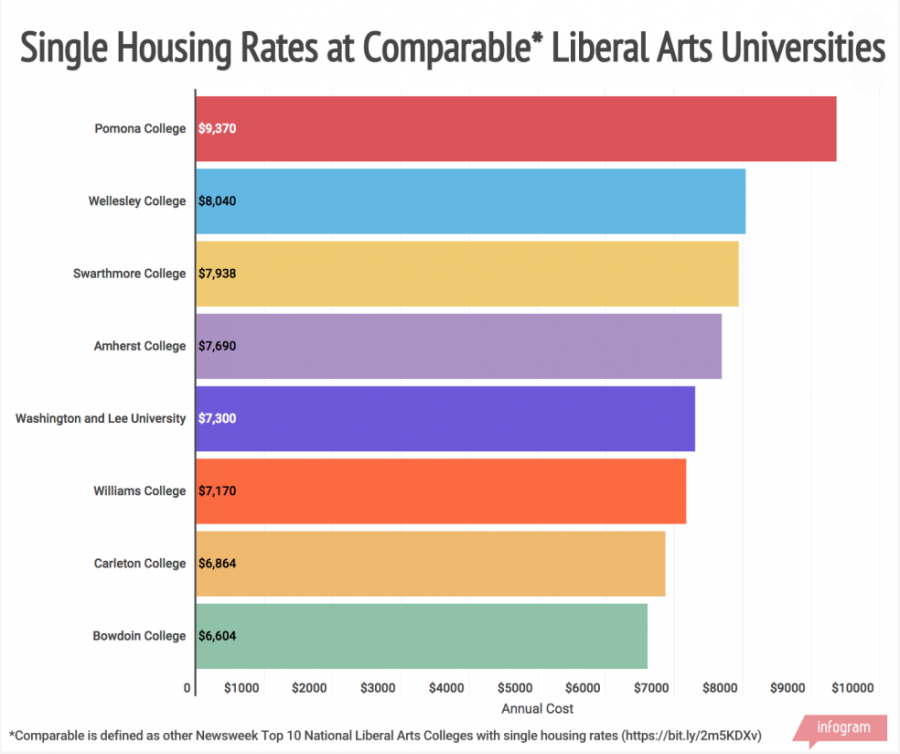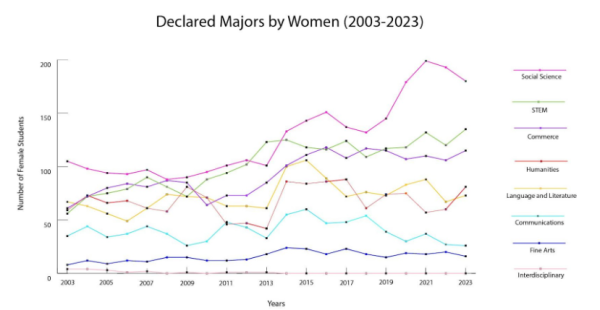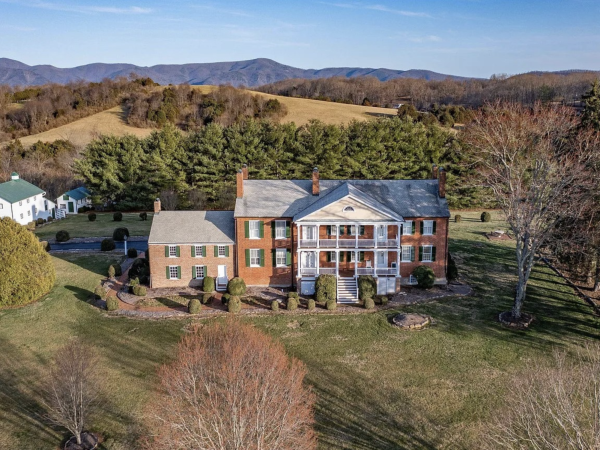The “Haves and the Have-Nots:” Housing at Washington and Lee University
In an attempt to be more inclusive, the university now offers a flat rate for all first-year dorm rooms
September 17, 2018
Housing at Washington and Lee University has transitioned to a flat rate, regardless of room type or location.
The university decided on a flat rate of $7,300 for single, double and triple rooms after considering housing costs at comparable liberal arts universities, David Leonard, dean of Student Life, said.
Leonard said that besides making the cost of attendance more straightforward for families budgeting for college, the goal of the flat room rate was to make housing more accessible for all students.
“We don’t necessarily feel as though we should have the haves and the have-nots,” Leonard said. “A lot of students from more disadvantaged backgrounds couldn’t afford the opportunity to live in a single room. We wanted to even that playing field.”
For the 2017-18 academic year, a single room cost $8,000 and a double or triple cost $5,600. The flat room rate increased the price of a double or triple room by $1,700 and decreased the price of a single room by $700.
Taylor Reese, co-founder of the Washington and Lee First-Generation Low-Income Partnership (FLIP), said the new price presents a financial burden to many low-income students.
“Anyone, including myself, who got a double in order to save money, is now no longer able to do that,” Reese said. “I know people who live in Woods Creek as juniors just so they can get a double so they can keep the prices lower.”
Upperclassmen whose housing costs were previously covered by financial aid are still covered next year, despite the price increase.
Jason Rodocker, associate dean of students and dean for First-Year Experience, assigns housing for incoming students based on their housing form answers.
“I’ve been doing this six years now. It shifted from more people requesting singles than we had available to more people requesting doubles than we had available,” Rodocker said. “I’m hoping that it kind of shifts back to landing right about where our supply meets demand.”
First-year room selection is based on when a student submits their housing application, and financial considerations are not taken into account when deciding which students receive a double or a single room.
Rodocker said the new flat housing rate will be less burdensome on those who had to be placed in a single even though they preferred a double, and allow families to better estimate the university’s cost of attendance.
Students at Washington and Lee are required to live on campus until senior year. First-years live in either Graham-Lees or Gaines, the two dorms on campus. Gaines was renovated in 2014 and Graham-Lees in 2015.
Sophomores can choose to live in Woods Creek Apartments or theme houses, including three new theme houses, Sankofa, the eSports house and 19 University Place, a recovery support residence for students committed to abstinence following substance abuse. Juniors can live in the Third-Year Village, Woods Creek or theme houses. Students involved in Greek life may also choose to live in their respective sorority or fraternity houses as upperclassmen.
According to a letter written by the university treasurer, $10 million in renovations were approved for two of the three Woods Creek apartment buildings. The façade of all Woods Creek apartment buildings were renovated this summer, along with the interior of Woods Creek East. Woods Creek Central was renovated in 2016.
Leonard said the university originally planned to complete the renovations for both the East and West apartment buildings over the summer, but realized the task was more complicated than anticipated. Woods Creek West will not be renovated until the summer of 2019.
Housing at Washington and Lee is decided by a lottery system, in which students are randomly assigned a registration time. For apartment housing, the student with the earliest registration time can also register his or her roommates.
Last year, Jenna Marvet, ‘21, contacted Sarah Walker, the university’s senior residential life office coordinator, when she found out that only one apartment building would be renovated this year. Marvet suggested students forced to live in West due to a late lottery time should pay less than those in East and Central, because they will receive less amenities.
Marvet’s email was forwarded to Leonard, who notified Marvet that the university has never varied pricing for renovated and non-renovated housing, and will not do so in the future.
“Just because something has been that way for a long time doesn’t mean that it is the right way, and I feel like W&L takes advantage of the fact that housing on campus is required,” Marvet said.
Sarah Jaramillo, ‘21, a current resident of Woods Creek West, said it is unfair that residents of Woods Creek West are required to pay the same amount as students in the renovated buildings.
“It’s like you’re getting less for your buck,” Jaramillo said. “Our kitchen sink was leaking from the nozzle. Our bathroom sink has mold in it.”
Leonard said students are welcome to report any unsatisfactory living conditions to University Facilities for maintenance work.
“We want people to be happy and comfortable in the confines of their home away from home,” Leonard said. “I also recognize that college residence halls aren’t necessarily the Taj Mahal. It isn’t a five-star hotel.”
Renovations to Woods Creek East include full XL beds, vinyl tile flooring, a dishwasher and a microwave, as well as free laundry with individual washer and dryer units in each apartment.
In an effort to compensate for the delayed renovations to Woods Creek West, full XL beds were installed in every room.
Delaney Foster, ‘21, who lives in Woods Creek West this year, is unsatisfied with the bed upgrade as a solution.
“It’s not something that I feel like really offsets all the downsides of West,” Foster said. “It’s a little bit of a disappointment.”
The university also negotiated with its laundry provider so that students using communal laundry rooms like those in Woods Creek West do not have to pay for laundry.
Laundry charges were never factored into the university’s housing cost estimate. A survey sent to FLIP members showed many students delayed doing their laundry for financial reasons, Reese said.
For freshmen and sophomore students using laundry rooms requiring payment, washing and drying one load of clothes cost $3.00. In past years, students living in the Third-Year Village or Woods Creek Central had access to free washing machines and dryers. This year, that cost disparity is eliminated.
The FLIP food pantry, located on the third floor of Elrod Commons, includes Tide Pods and dryer sheets for student use to help offset some additional living costs.
Leonard said he believes the university’s shift to a flat room rate, renovations to Woods Creek Apartments and removal of laundry costs are important steps in making Washington and Lee more inclusive.
“We’re pretty confident in terms of moving in this direction,” Leonard said. “Like with anything, there are adjustments when you make changes. But a couple of years from now, that will all be part of the W&L experience.”
This story was has been adapted from original reporting completed during winter term as part of JOUR-202: Ditigal Journalism.













